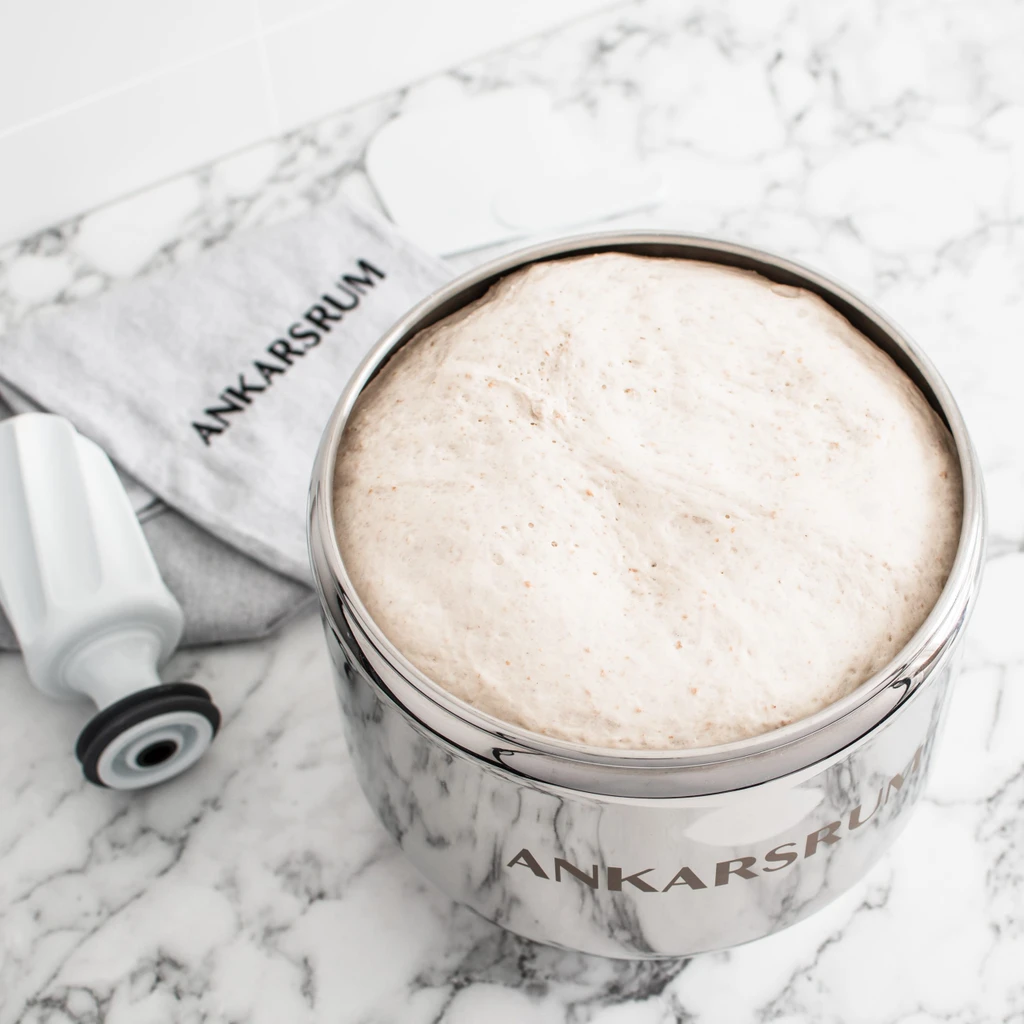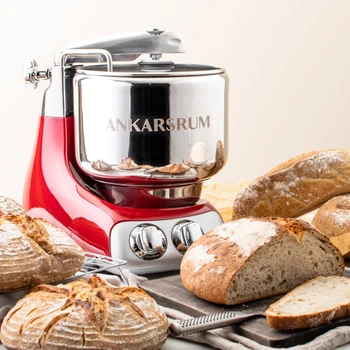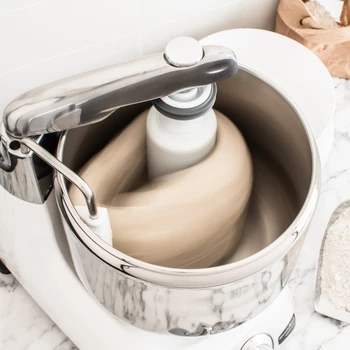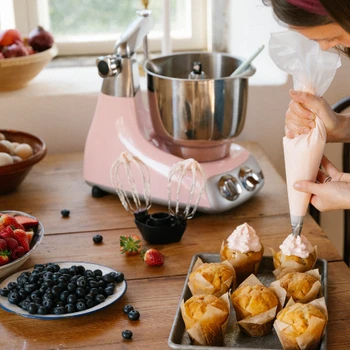Everything about fermentation
Fermentation makes bread swell, mature and develop taste.
A leavening agent is needed for bread to become airy and grow. Yeast and sourdough are the most common leavening agents for bread baking, and they work in the same way.
When flour and liquid are mixed, gluten threads form a network. During fermentation, carbon dioxide forms gas bubbles that are encapsulated by this network of gluten threads. The gas bubbles are what make dough expand and mature.
Fermentation can be affected by various factors such as room temperature, temperature of the dough, humidity, ingredients and time.
Different types of fermentation
The most common type of fermentation takes place at room temperature and involves two steps: lying time and rest time. The first step occurs when dough is left to rise in the bowl, after kneading, and the second step occurs when the dough rests on a plate or in the pan.
Another method is cold fermentation. For this process, use half the amount of yeast or less, use cold dough liquid, and let the dough rise in the fridge for several hours, usually overnight. The dough will normally last in the fridge for up to three days.
With a reduced amount of yeast and cold dough liquid, you can also let dough rise at room temperature, either overnight or for about 8-12 hours. This is usually called night fermentation.
The biggest difference between these methods – in addition to time and amount of yeast – is that dough that ferments slowly can develop more flavor than a quick-fermented bread.
The first fermentation – lying time
After dough is kneaded, it should rest in the bowl. The first fermentation usually takes place at room temperature, and the dough should swell and double in size. During lying time, the dough matures, flavors develop and gas bubbles cause the dough to expand.
Different amounts of yeast affect the dough’s lying time. Generally, 50 g (1/4 cup) of yeast with ½ liters (about 2 cups) of dough liquid requires about half an hour of fermentation. Half as much yeast requires double the fermentation time. Also, a coarser flour requires a longer lying time than a sifted flour.
To see if dough is ready to rise, press lightly on it – if the depression comes back quickly, the dough is ready to be baked.
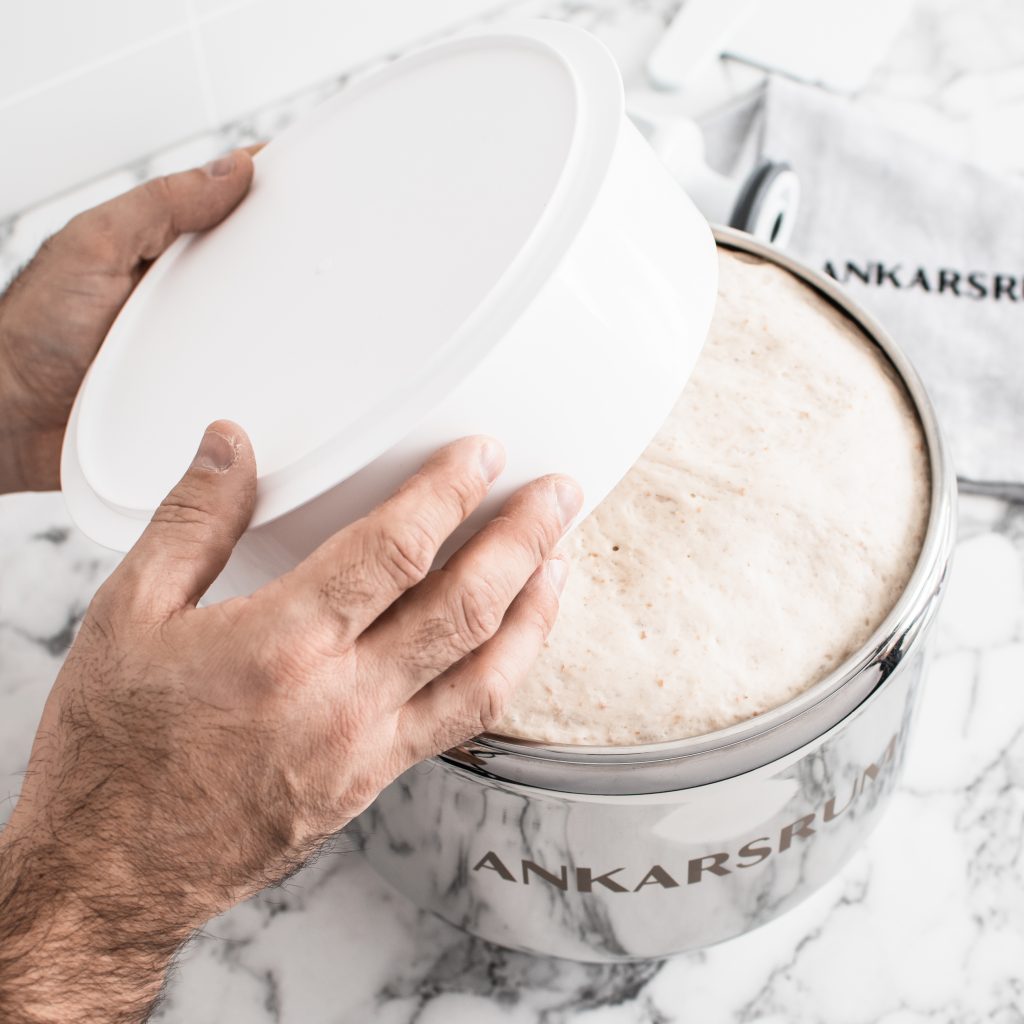
Second fermentation – rest time
Rest time is when a ready-formed dough is allowed to rise on a plate or in mold.
Covering
For an even fermentation and to protect the dough from drying out, you should cover it. When dough is fermented in the Assistent bowl, you can cover it with the dough lid. Then the dough will retain its moisture and ferment evenly, and it will be protected from drying out. When baked bread is resting on a plate or in a mold, cover it with plastic wrap or a damp baking cloth.
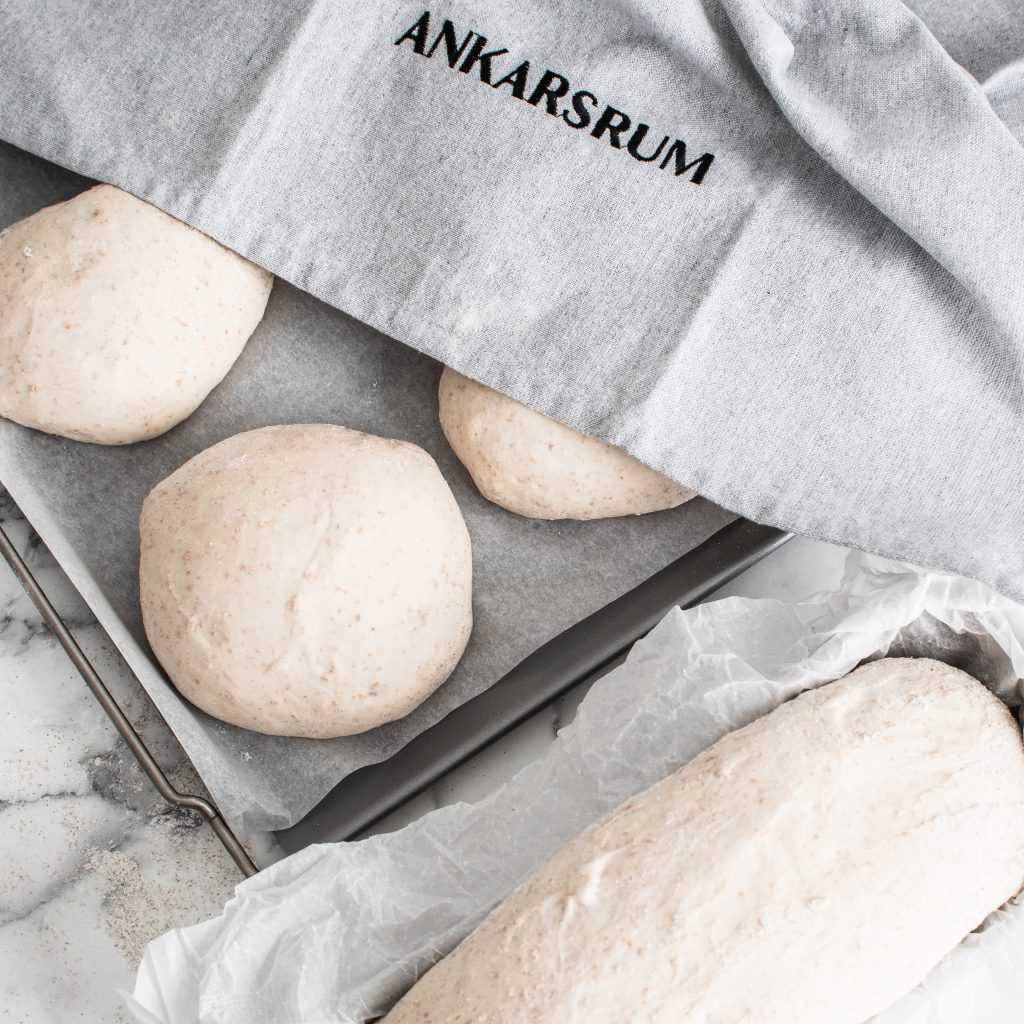
Temperature
Bread ferments differently in different temperatures: slowly when it is cold, and faster when it is warm.
Dough should generally be fermented at room temperature, which is around 68-77° F.
Professional bakers often use leavening cabinets that make it possible to control the humidity and temperature of bread fermentation.
As a home baker, you can imitate a leavening cabinet with your oven. Just set the oven to 86° F, place a pan of hot water in the oven with the bread, and close the oven door. However, this will only work if the oven temperature is below 95° F.
Yeast time
Fermentation time depends on the type of bread, its ingredients, the amount of yeast, temperature and the size of the bread. Small breads such as buns ferment faster than loaves. A wheat bread normally needs less time to ferment than a rye bread.
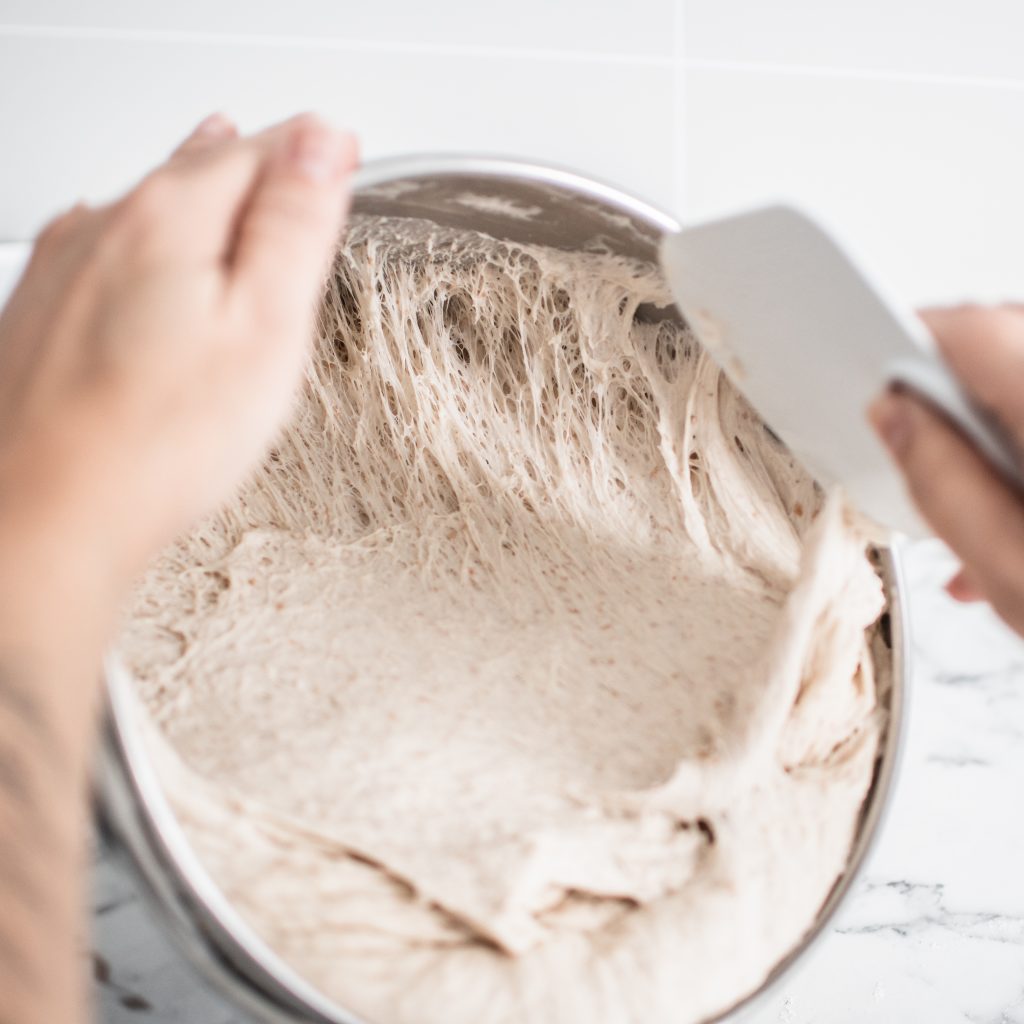
Over-fermentation
If dough is over-fermented, it flows out and becomes flat. If this happens, you can try turning the dough into a loaf pan and baking. Hopefully this will be enough to save the dough and produce an edible bread.
Fermentation during baking
As bread bakes, it continues to grow. The yeast dies at about 122° F, but the gas bubbles that have formed continue to expand.
